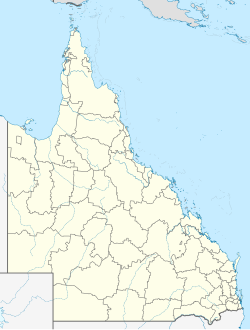| Moola Queensland | |||||||||||||||
|---|---|---|---|---|---|---|---|---|---|---|---|---|---|---|---|
| Coordinates | 27°02′20″S151°33′53″E / 27.0388°S 151.5647°E | ||||||||||||||
| Population | 218 (2021 census) [1] | ||||||||||||||
| • Density | 1.0577/km2 (2.740/sq mi) | ||||||||||||||
| Established | 1800s (approx.) | ||||||||||||||
| Postcode(s) | 4406 | ||||||||||||||
| Elevation | 460 m (1,509 ft) | ||||||||||||||
| Area | 206.1 km2 (79.6 sq mi) | ||||||||||||||
| Time zone | AEST (UTC+10:00) | ||||||||||||||
| Location | |||||||||||||||
| LGA(s) | Western Downs Region | ||||||||||||||
| State electorate(s) | Warrego | ||||||||||||||
| Federal division(s) | Maranoa | ||||||||||||||
| |||||||||||||||
Moola is a rural locality in the Western Downs Region, Queensland, Australia. [2] In the 2021 census, Moola had a population of 218 people. [1]
